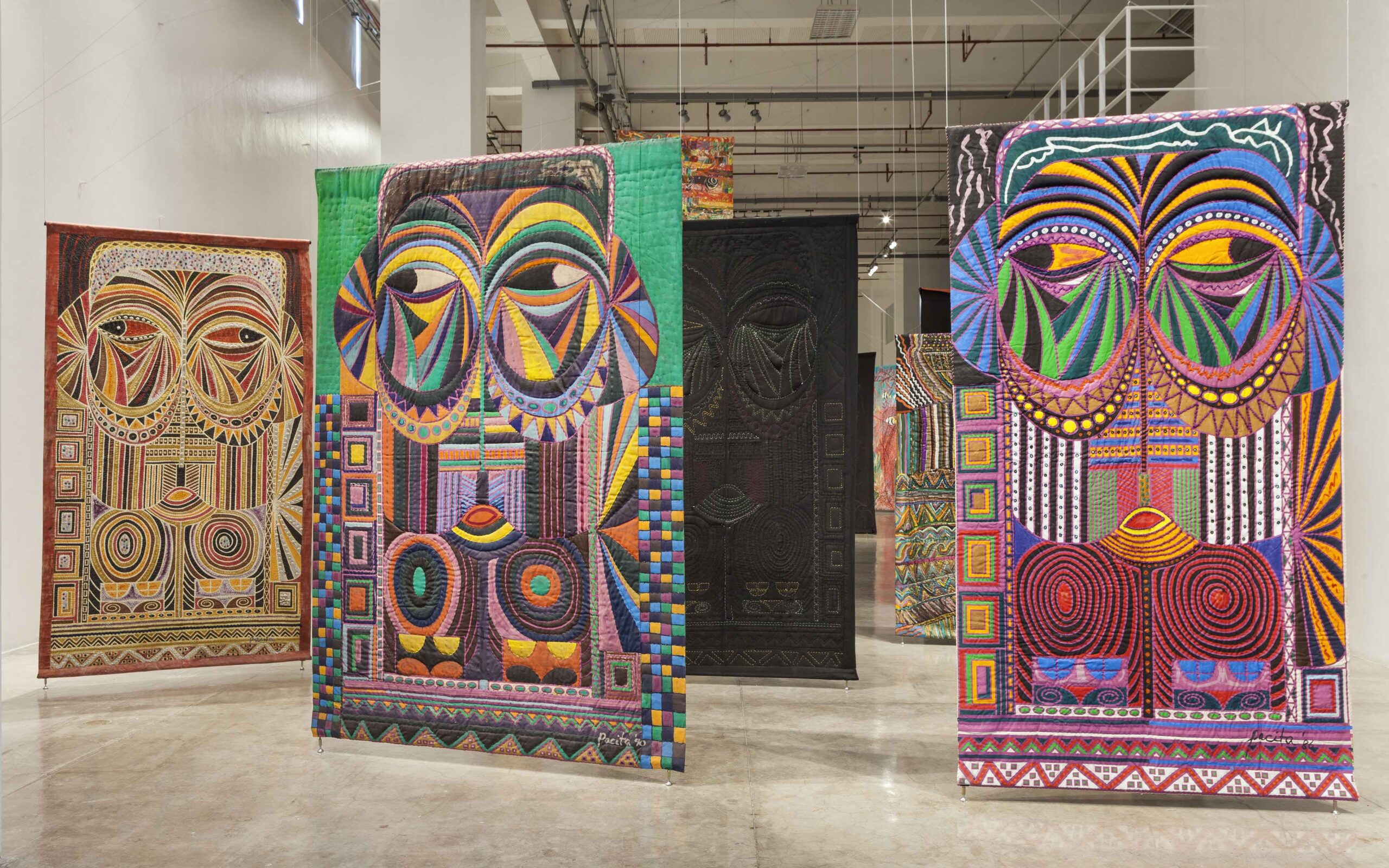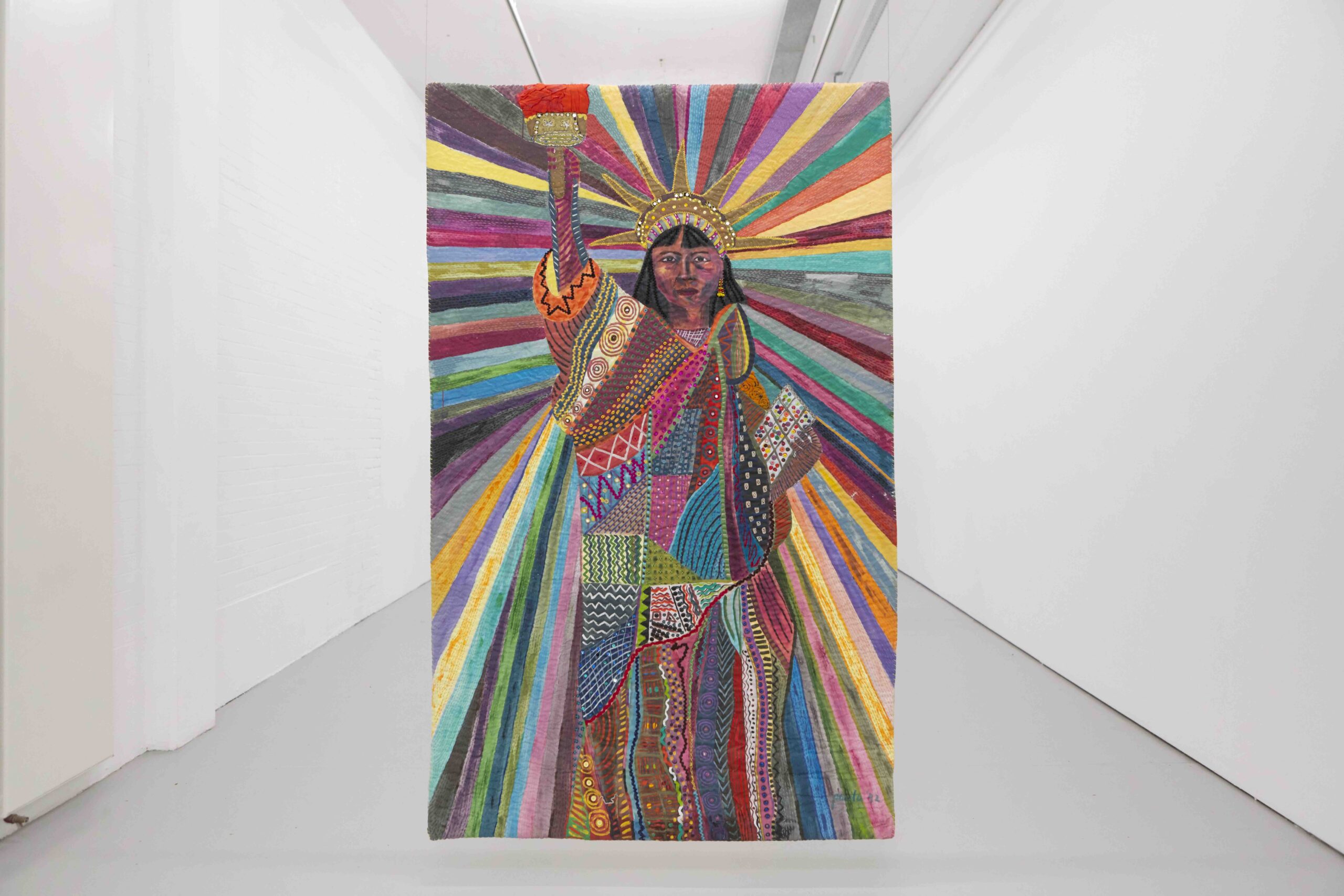
The exuberant and wide-ranging works of Pacita Abad (US, b. Philippines, 1946–2004) are the subject of the first-ever retrospective spanning the artist’s 32-year career. Abad is best known for her trapuntos, a form of quilted painting made by stitching and stuffing her canvases as opposed to stretching them over a wood frame. During her lifetime, the prolific artist made a vast number of artworks that traverse a diversity of subjects, from colorful masks to intricately constructed underwater scenes to abstract compositions. The exhibition includes more than 100 works—most of which have never been on public view in the United States—showcasing her experiments in different mediums, including textiles, works on paper, costumes, and ceramics. Organized by the Walker in collaboration with Abad’s estate, the presentation celebrates the multifaceted work of an artist whose vibrant visual, material, and conceptual concerns are as urgent today as they were three decades ago.

Abad moved to the United States in 1970 to escape political persecution after leading a student demonstration against the authoritarian Marcos regime. Informed by this experience, she was determined to give visibility to political refugees and oppressed peoples through her art: “I have always believed that an artist has a special obligation to remind society of its social responsibility.” Works from her Immigrant Experience series (1983–1995) highlight the rising multiculturalism of the 1990s. These works call attention to the era’s contradictions and omissions, centering the sufferings and triumphs of people on the periphery of power. The multiplicity of stories referenced in the series include such events as the 1992 Los Angeles riots, the Haitian refugee crisis, and the detention of Mexican migrant workers at the US border, offering an intimate look at lives often obscured by the reductive, xenophobic headlines of the time.
Though she became a US citizen in 1994, Abad lived for several years in a number of countries around the world, including Bangladesh, the Dominican Republic, Indonesia, Kenya, the Philippines, Singapore, and Sudan. Largely self-taught, she interacted with the various artistic communities she encountered on her travels, incorporating a diversity of cultural traditions and techniques—from Korean ink brush painting to Indonesian batik—into her expansive practice. Abad’s global, peripatetic existence is reflected in the portability of her works and in her use of textiles, a medium often associated with female, non-Western labor and historically marginalized as craft.
The exhibition is accompanied by the first major publication on Abad’s work, produced by the Walker. In addition to the most comprehensive documentation of the artist’s work to date, the volume includes texts by Victoria Sung, Julia Bryan-Wilson, Nancy Lim, Ruba Katrib, Xiaoyu Weng, and Matthew Villar Miranda as well as oral histories conducted with artists, curators, family members, and others who knew Abad, edited by Pio Abad and Victoria Sung.
Website: Pacita Abad
https://pacitaabad.com/
Source: Walker Art Center, January 16, 2023
https://walkerart.org/